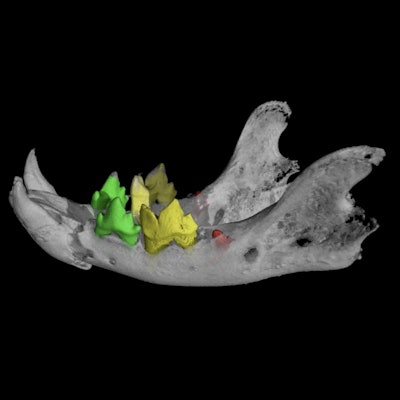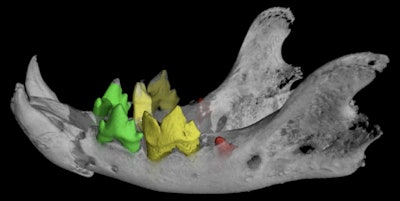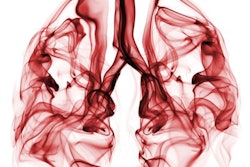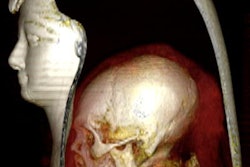
U.K. researchers have used 3D micro-CT to uncover the internal features and material composition of three mummified animals from ancient Egypt. The cobra, kitten, and Eurasian kestrel that were scanned come from the collection of the Egypt Center at Swansea University.
"Using micro-CT, we can effectively carry out a postmortem on these animals, more than 2,000 years after they died in ancient Egypt," noted lead researcher Prof. Richard Johnston of Swansea University College of Engineering in a press statement. "With a resolution up to 100 times higher than a medical CT scan, we were able to piece together new evidence of how they lived and died, revealing the conditions they were kept in, and possible causes of death."
"These are the very latest scientific imaging techniques. Our work shows how the hi-tech tools of today can shed new light on the distant past," he added.
%{[ data-embed-type="image" data-embed-id="6555227664e6b8cb92446707" data-embed-element="span" data-embed-alt="The coiled remains of a mummified juvenile Egyptian cobra (Naja haje). Evidence of kidney damage showed it was probably deprived of water during its life, developing a form of gout. Analysis of bone fractures shows it was ultimately killed by a whipping action, prior to possibly undergoing an 'opening of the mouth' procedure during mummification; if true, this demonstrates the first evidence for complex ritualistic behavior applied to a snake. Images and video courtesy of Swansea University." data-embed-src="https://img.auntminnieeurope.com/files/base/smg/all/image/2020/08/ame.2020_08_20_15_01_0032_2020_08_20_animal_mummy_1.png?auto=format%2Ccompress&fit=max&w=1280&q=70" data-embed-caption="The coiled remains of a mummified juvenile Egyptian cobra (Naja haje). Evidence of kidney damage showed it was probably deprived of water during its life, developing a form of gout.<br> Analysis of bone fractures shows it was ultimately killed by a whipping action, prior to possibly undergoing an 'opening of the mouth' procedure during mummification; if true, this demonstrates the first evidence for complex ritualistic behavior applied to a snake. Images and video courtesy of Swansea University." data-embed-width="656" data-embed-height="400" ]}%Other methods of scanning ancient artifacts have limitations, according to Johnston. Standard x-rays only give 2D images, while medical CT scans give 3D images, but the resolution is low.
Micro-CT, in contrast, can produce high-resolution 3D images and enable virtual bone measurement, making accurate species identification possible. Used widely within materials science to image internal structures on the micro-scale, the technique involves building a 3D volume (or tomogram) from many individual projections or radiographs. The 3D shape can then be 3D-printed or placed into virtual reality, allowing further analysis.
In an article published on 20 August in Scientific Reports, the authors explain that ancient Egyptians mummified animals as well as humans, including cats, ibis, hawks, snakes, crocodiles, and dogs.
 This scan of the mandible and teeth of a mummified cat reveals fractures and unerupted mandibular first molars (red), indicating it was a kitten at the time of death. Scale: skull total length = 68.9 mm.
This scan of the mandible and teeth of a mummified cat reveals fractures and unerupted mandibular first molars (red), indicating it was a kitten at the time of death. Scale: skull total length = 68.9 mm.Sometimes these animals were buried with their owner -- possibly as a food supply for the afterlife -- but the most common animal mummies were votive offerings, brought by visitors to temples to offer to the gods and to act as a means of communication with them. Animals were bred or captured by keepers and then killed and embalmed by temple priests. It is though that as many as 70 million animal mummies were created in this way.
The full title of the research paper is "Evidence of diet, deification, and death within ancient Egyptian mummified animals."
Video of Ancient Egyptian cat mummy. The cat was less than 5 months old. Separation of the vertebrae indicates it might have been strangled.
"This collaboration between engineers, archaeologists, biologists, and Egyptologists shows the value of researchers from different subjects working together," commented Carolyn Graves-Brown, PhD, curator of Swansea University's Egypt Centre, which is Wales' largest museum of Egyptian antiquities. "Our findings have uncovered new insights into animal mummification, religion, and human-animal relationships in ancient Egypt."



















